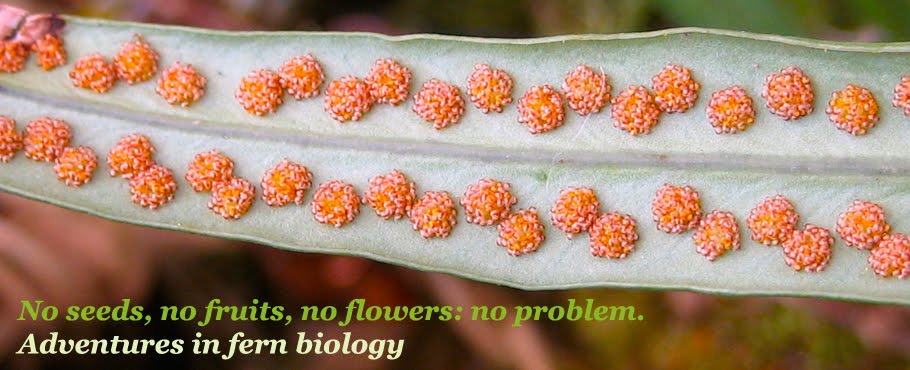
I have returned from the beautiful, balmy mountains of Costa Rica to the frozen hellscape of Madison, WI, where during my absence there was a week when the temperature didn't go above 8 degrees Fahrenheit. Glad I missed that, although today's -1 isn't proving too pleasant either. Given the bone-numbing weather I find myself pining for Costa Rica's beautiful ferns, so I will focus on them for a few posts.
This beauty is a species of Nephrolepis, a genus in Polypodiales that is characterized by, among other things: an apex that remains curled in a fiddlehead, and articulate pinnae that fall off the rachis. The popular house plant Boston Fern is a species of Nephrolepis, but it tends to leave a mess behind when it decides to shed its pinnae. This one was growing as an epiphyte in a rainforest preserve, called Braulio Carrillo, which we visited on the return trip from La Selva to San Jose.
